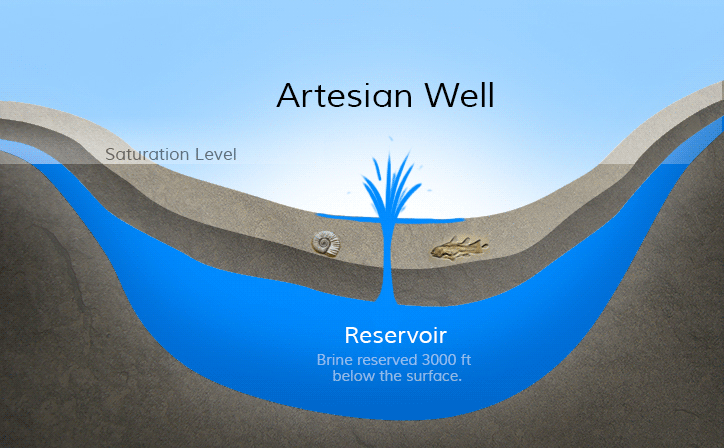38.WHAT IS AN ARTESIAN WELL?
In an artesian well, the water can leap high into the air like a geyser from its prison far below the surface of the earth. The name comes from the Artois region in northern France where the first European well of this kind was drilled more than 800 years ago.
Artesian wells are possible only under certain conditions. There must be a layer of porous rock or sand that is buried between two layers of solid rock impervious to water. Somewhere this porous layer must be exposed to the surface so that water falling as rain or snow will sink downward until it is trapped between the solid, watertight layers above and below.
There the great pressure on all sides holds it prisoner until man releases it. When an opening a few centimeters wide is bored straight down through the solid upper strata to the sandy layer, the freed water gushes to the surface with a mighty force.
The ancient Chinese and Egyptians dug artesian wells. Some of the older European wells required six or eight years to drill. Modern machinery makes drilling today a quick and simple task.
Near Edgemont, South Dakota, two wells drilled nearly 915 meters deep supply some 4,000,000 liters daily. Coming from such a depth, this water registers a temperature of 37 degrees centigrade when it reaches the surface. Another well in this region spouts even hotter water!
Several large cities in the United State, as well as much of the London area, derive part, or all, of their water supply from artesian wells. The word’s biggest artesian area is in Australia.



Leave a Reply